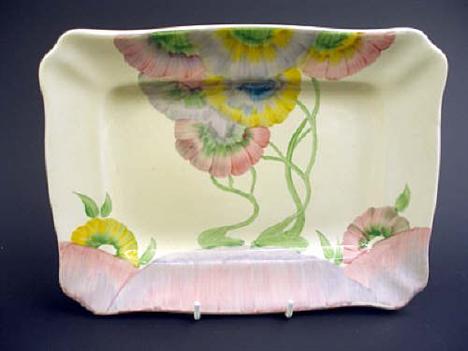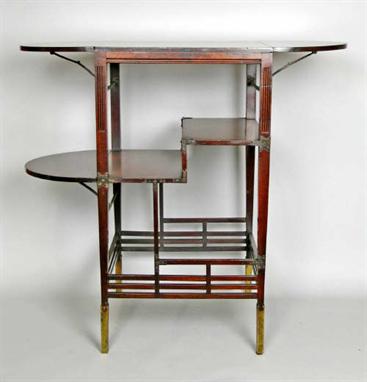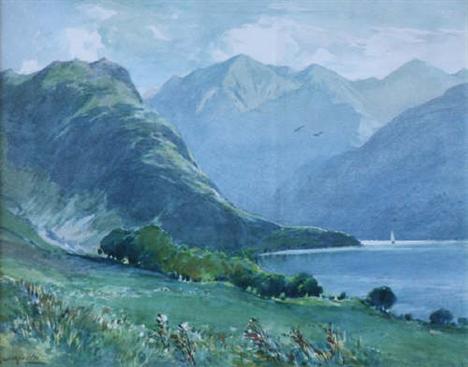23175 Preisdatenbank Los(e) gefunden, die Ihrer Suche entsprechen
23175 Lose gefunden, die zu Ihrer Suche passen. Abonnieren Sie die Preisdatenbank, um sofortigen Zugriff auf alle Dienstleistungen der Preisdatenbank zu haben.
Preisdatenbank abonnieren- Liste
- Galerie
-
23175 Los(e)/Seite
Four: Private T. E. Wilkinson, Hampshire Regiment and Royal Engineers 1914-15 Star (17029 Pte., Hamps. R.); British War and Victory Medals (17029 Pte., Hamps. R.); Belgium, Croix de Guerre, ‘A’ cypher, mounted court style for wear, nearly extremely fine (4) £140-180 Croix de Guerre London Gazette 4 September 1919. ‘198226 Sapper Thom. Edgar Wilkinson, Royal Engineers (Redcar)’. Thomas Edgar Wilkinson, formerly of the 11th Reserve Cavalry Regiment, entered the Egypt theatre of war with the Hampshire Regiment on 24 August 1915. Later, as a Sapper with the Royal Engineers he was awarded the Belgian Croix de Guerre. He was transferred to the ‘Z ‘Class Reserve in March 1919. Sold with copied gazette extract and m.i.c.
Family group: Three: Private G. W. Haynes, Royal Marine Light Infantry 1914-15 Star (PO. 14959 Pte., R.M.L.I.); British War and Victory Medals (PO. 14959 Pte., R.M.L.I.), good very fine Three: Craftsman E. G. Haynes, Royal Electrical and Mechanical Engineers 1939-45 Star; Italy Star; War Medal 1939-45, in their card forwarding box, together with a quantity of related prize medals (6), mainly for Civil Service weight-lifting competitions in the 1950s, four enamelled and three named, and a motor-cycling contest prize shield, also named to the recipient and dated ‘13.5.1958’, generally good very fine (Lot) £100-150 George Walter Haynes was born in Battersea, London in September 1889 and enlisted in the Royal Marine Light Infantry in August 1907. A Private serving aboard the battleship H.M.S. Audacious on the outbreak of hostilities in August 1914, he quickly saw service of the active kind when she was sunk by a mine off Northern Ireland on 27 October 1914, thereby winnning the unfortunate accolade of being the first capital ship of any nation to be lost in the Great War. The mines had been laid by the Norddeutscher Lloyd liner Berlin, which had been fitted out as an auxiliary cruiser and minelayer early in August. The Audacious blew up and sank after 12 hours of buffeting by the seas and two failed attempts to take her in tow, but luckily her complement was safely taken off by the White Star liner Olympic. Joining the battleship Queen Elizabeth that December, Haynes remained similarly employed until returning home to an appointment in the Portsmouth Division in January 1918, a period in which he witnessed extensive active service in the Dardanelles and off Gallipoli. Of all the capital ships employed in that theatre, the Queen Elizabeth was one of the most actively engaged. Carrying out a successful bombardment with her 15-inch guns of the Turkish Narrows forts from a position off Gabe Tepe in early March 1915, she went on to witness the famous landings in the following month, when Sir Ian Hamilton used her as his ‘mobile H.Q.’ off the beach heads. Off Helles, as evidenced by Hamilton’s own account, one of her shells saved an advancing British unit: ‘At a trot they came on .. their bayonets glittering and their officer yards in front waving his sword, Crash! and the Queen Elizabeth let fly a shrapnel [shell], range 1200 yards, a lovely shot; we followed it through the air with our eyes. Range and fuse - perfect! The huge projectile exploded fifty yards from the Turkish right and vomited its contents of 10,000 bullets clean across the stretch whereon the Turkish company was making its last effort. When the dust and smoke cleared away nothing stirred on the whole of that piece of ground.’ A superb painting depicting the Queen Elizabeth bombarding the Turkish Narrows forts in March 1915, by Norman Wilkinson, forms part of the Imperial War Museum’s collection. Haynes was discharged in October 1919; sold with around 20 photographs of the Great War period, and four postcards, these including one or two good portraits of the recipient, and a later image of him in the uniform of the Auxiliary Fire Service. Also sold with a quantity of original documentation relating to Edwin George Haynes, including his official ‘call up ‘papers, letters and his Soldier’s Release Book, the latter dated 5 July 1947.
Pair: Trooper G. N. K. Wilkinson, 11th Hussars General Service 1962, 1 clasp, South Arabia (23493967 Tpr., 11 H.); U.N. Medal, UNFICYP ribbon, mounted as worn, good very fine (2) £60-80 Scarce ‘South Arabia’ clasp to the regiment who did not serve in that theatre. The U.N. Cyrus probably from the period 1970-71 when individual squadrons were detatched from the then amalgamated The Royal Hussars (PWO).
Efficiency Medal (6), G.V.R., Territorial (5488867 W.O. Cl.II J. White, 4-Hamps. R.); G.VI.R., 1st issue, Territorial (4526594 Sjt. K. Wilkinson, R. Fus.; 5492575 Sjt. P. C. Edwards, 5-7 Hamps. R.; 5499581 Gnr. E. J. Helm, R.A.); G.VI.R., 2nd issue, Territorial (2086275 Sjt. A. V. Newberry, R.E.M.E.); E.II.R., 2nd issue, Territorial (22824322 Gnr. J. J. Anns, RA) good very fine (6) £120-160.
AN 80 BORE SIX-SHOT PERCUSSION PEPPERBOX REVOLVER SIGNED WILKINSON & SON, LONDON, BIRMINGHAM PROOF MARKS, CIRCA 1845 with blued fluted barrel group, signed rounded German silver action engraved with scrolls of foliage and border ornament, engraved blued bar hammer, blued trigger, figured walnut butt, and engraved blued trigger-guard (surface rust, pitting) 21cm; 8 1/4in
An Indian Colonial silver coloured melon shape tea pot by Lowe & Co, Madras, with a bud finial, a leaf-capped scroll handle and on four leaf and flower feet, 28cm (11in) long, 724g (23.25 oz) grossSee Wilkinson, Wynyard R. T. The makers of Indian Colonial Silver ... 1760-1860 London 1987, p. 119 for the mark
An early 19th century oak and mahogany banded longcase clock, the hood having broken swan neck pediment, twin turned pilasters flanking painted square dial (width 12") signed to the centre Wilkinson of Leicester (active 1815-1826), and having Roman numerals, rolling date dial, having a 30 hour weight driven striking movement (lacking bell), the trunk having plain panelled door with mahogany crossbanding above a panelled box base with further mahogany banding to bracket feet, height 208cm (Illus.)
An early Victorian swing-handled Sugar Basket, of circular form, with cast and pierced floral handle to a flared circular wirework frame, with applied oak leaf and acorn garlands to a vacant cartouche, and raised on four applied scrolling feet (lacking glass liner), height 7”, weight 7 oz, Sheffield 1845, Maker’s Mark Hy Wilkinson & Co
A Victorian swing-handled Sugar Basket, of circular form, with cast and applied scrolling border, and hinged twisted square section handle, to a heavily pierced foliate body, with presentation inscribed cartouche “Presented To The Revd J Williams BA by His Friends and Parishioners as a Mark of their High Esteem and Appreciation of his Ministerial Service during a period of Fourteen Years as Incumbent of Pontblyddyn Dec 1859”, and fitted with a blue glass insert to a beaded and waisted pedestal, and raised on a spreading circular foot, height 8”, weight 8 oz, Sheffield 1854, Maker’s Mark Hy Wilkinson & Co
Late Victorian silver and silver gilt Claret Jug, with hinged lid, scrolled handle, with engraved gilt panels of flowers and tendrils on a circular base, makers mark, H.W., possibly Henry Wilkinson, London 1871, a very similar Goblet, maker ECB, London 1871 and another Goblet, John Aldwinckle & Thomas Slater, London 1881, 1140 gms, in carrying case by M. S. Poynder Ltd, 49 Sloan Street, London, SW1, (3).
A Victorian plated officer's sword by Thurkle, Soho London with VR cypher to the pierced guard and etched foliate decoration to the 83cm blade (some pitting and loss to plating) with scabbard; A George V officer's sword of similar design (makers mark unclear, possibly Guthrie); and an ERII officer's sword by Wilkinson with leather covered scabbard (some light rust to blade) (3)
E.W. Godwin (1833-1886): An Anglo-Japanese taste walnut table, with folding shelves, gilt brass fittings, probably made by Collinson and Lock, circa 1872-5, 74.7cm (29.5ins) high, 81.5cm (32ins) wide (open), 40.6cm (16ins) deep. Condition report available on request.. Literature: Susan Weber Soros; The Secular Furniture of E.W.Godwin, Yale 1999, p.146 pl. 211, Jeremy Cooper, Victorian and Edwardian Furniture and Interiors, London 1987, pl. 326, Godwin sketchbooks, Victoria and Albert Museum, London. In her book, Susan Soros illustrates a sketch by Godwin for a table with folding shelves from the V & A archives (V & A PD E.255-1963, fol 21) and offers the following footnote to her illustration on p.146 pl 211. ‘This table is one of the most overtly Anglo-Japanese pieces in Godwin’s oeuvre. Nancy Wilkinson has identified drawings in Godwin’s sketchbooks of Japanese tansu (V & A PD E.280-1963, fol. 5) taken from Aime Humbert’s Le Japon illustre (1870) that show similar features, confirming Godwin’s awareness of these forms when he designed the table. The folding shelves seem to be a Godwin adaption, taken from late-eighteenth century Sheraton flap tables, since there is no precedent in Japanese furniture forms’. Similar examples are in the Metropolitan Museum of Art, New York, National Trust, Ellen Terry Memorial Museum, Smallhythe Place, Kent and are sometimes referred to as ‘Smallhythe’ tables. Dame Ellen Terry, the Shakespearean actress who lived with Godwin between1868-75 owned a similar table.. In recent years, two examples have been sold at auction, with Simon Chorley, Southam, Cheltenham, Gloucestershire,November 30th 2006 and Sothebys London, The Best of British Design from the 19th and 20th Centuries-Paul Reeves: The Auction, 20th March 2008 Lot 38. Here Sothebys suggested that a total of six ‘Smallhythe’ tables are known to exist.. Clocks & Scientific Instruments
A Victorian partners' desk stand By Henry Wilkinson & Co Sheffield 1853 the stand of shaped oval outline with heavy scroll formed border and pierced scroll inner border, with two faceted glass baluster bottles, one inkwell and other powder pot, with foliate scroll borders and central chamber stick on stand stand 33cm wide
A squad-signed white England No.8 international shirt, Nike & Cellnet sponsor’s logos, red rose emblem, red trim, extensively signed to the front in black marker pen by approximately 24 players including de Glanville, Leonard, Grewcock, Greenwood, Guscott, Catt, Back, Wilkinson, Johnson, Dallaglio etc.
Miscellaneous rugby union memorabilia, comprising: two signed limited edition commemorations, the first a certificate issued at the launch of the Six Nations Championship in 2000, numbered 5 of 12, signed by a senior representative from each competing nation; the second issued by England rugby, numbered 5 of 12, and signed by Bernard Gadney, Hal Sever, Matt Dawson and Jonny Wilkinson; together with a Five Nations video signed by Will Carling; three French Rugby Union dinner menus for internationals v England in Paris (a pair for 2000, and a single for 2002); 1993 official RFU Yearbook; and a Lloyds TSB Six Nations information pack; three posters including a full-size Italian example for the 2000 international v England in Rome; and match programmes
A Thomas Webb & Sons cameo glass vase, late 19th century, decorated with flowering water lily against an opaque back ground, impressed mark to base, 16 cm high, another Thomas Webb & Sons glass vase, late 19th century, decorated with leaves on an ivory ground with gilt collar, impressed marks to base, 15 cm high and an R Wilkinson cameo glass vase, decorated with a rose against a pink back ground, 8 cm, (a/f).
-
23175 Los(e)/Seite






































